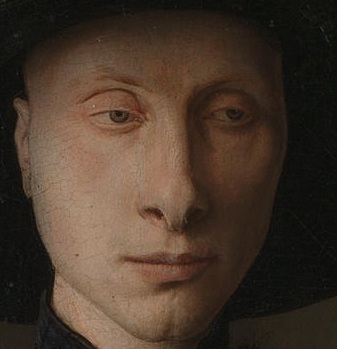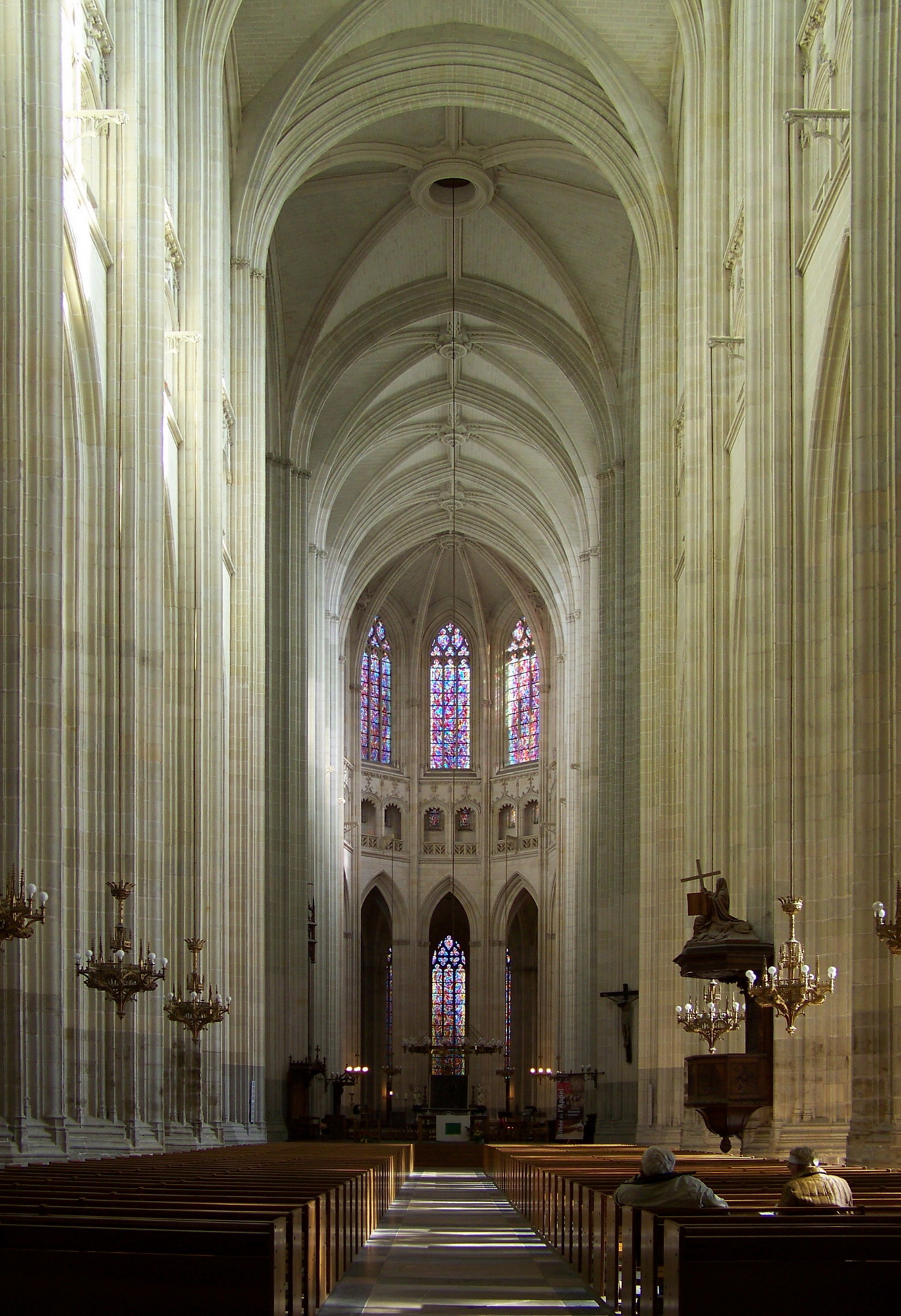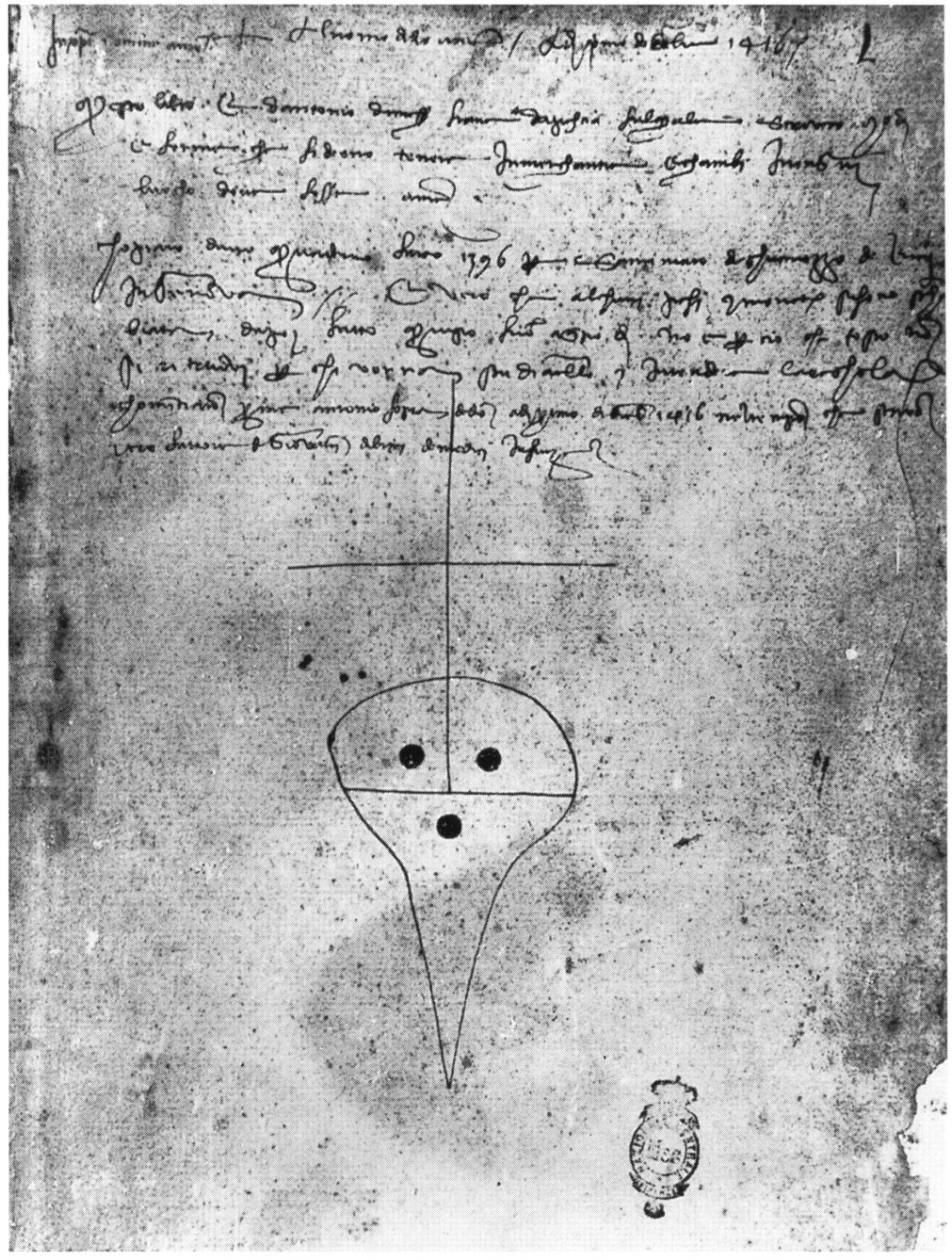|
1434
Year 1434 ( MCDXXXIV) was a common year starting on Friday (link will display the full calendar) of the Julian calendar. Events January–December * April 14 – The foundation stone of Nantes Cathedral in Nantes, France, is laid. * May 30 – Hussite Wars – Battle of Lipany: The Catholics and Ultraquists defeat the Taborites, ending the Hussite Wars. * June 19 or 20 – Zara Yaqob becomes Emperor of Ethiopia. * Late June – Miner Engelbrekt Engelbrektsson begins a Swedish rebellion against King Eric of Pomerania (named the Engelbrekt rebellion after him), eventually leading to the deposition of the king. * July 10–August 9 – Suero de Quiñones and his companions stage the ''Passo Honroso'', at the Órbigo in León. * August 16 – King Eric of Pomerania is deposed from the Swedish throne at a meeting in Vadstena. He still retains power in Denmark and Norway, though. * September – Cosimo de' Medici returns to Florence, ... [...More Info...] [...Related Items...] OR: [Wikipedia] [Google] [Baidu] |
Jan Van Eyck
Jan van Eyck ( , ; – July 9, 1441) was a painter active in Bruges who was one of the early innovators of what became known as Early Netherlandish painting, and one of the most significant representatives of Early Northern Renaissance art. According to Vasari and other art historians including Ernst Gombrich, he invented oil painting, Gombrich, The Story of Art, page 240 though most now regard that claim as an oversimplification. The surviving records indicate that he was born around 1380 or 1390, most likely in Maaseik (then Maaseyck, hence his name), Limburg, which is located in present-day Belgium. He took employment in The Hague around 1422, when he was already a master painter with workshop assistants, and was employed as painter and ''valet de chambre'' to John III the Pitiless, ruler of the counties of Holland and Hainaut. After John's death in 1425, he was later appointed as court painter to Philip the Good, Duke of Burgundy, and worked in Lille before moving to B ... [...More Info...] [...Related Items...] OR: [Wikipedia] [Google] [Baidu] |
Arnolfini Portrait
''The Arnolfini Portrait'' (or ''The Arnolfini Wedding'', ''The Arnolfini Marriage'', the ''Portrait of Giovanni Arnolfini and his Wife'', or other titles) is a 1434 oil painting on oak panel by the Early Netherlandish painter Jan van Eyck. It forms a full-length double portrait, believed to depict the Italian merchant Giovanni di Nicolao Arnolfini and his wife, presumably in their residence at the Flemish city of Bruges. It is considered one of the most original and complex paintings in Western art, because of its beauty, complex iconography, geometric orthogonal perspective, and expansion of the picture space with the use of a mirror. According to Ernst Gombrich "in its own way it was as new and revolutionary as Donatello's or Masaccio's work in Italy. A simple corner of the real world had suddenly been fixed on to a panel as if by magic... For the first time in history the artist became the perfect eye-witness in the truest sense of the term". The portrait has been conside ... [...More Info...] [...Related Items...] OR: [Wikipedia] [Google] [Baidu] |
Hussite Wars
The Hussite Wars, also called the Bohemian Wars or the Hussite Revolution, were a series of civil wars fought between the Hussites and the combined Catholic forces of Holy Roman Emperor Sigismund, the Papacy, European monarchs loyal to the Catholic Church, as well as various Hussite factions. At a late stage of the conflict, the Utraquists changed sides in 1432 to fight alongside Roman Catholics and opposed the Taborites and other Hussite spinoffs. These wars lasted from 1419 to approximately 1434. The unrest began after pre-Protestant Christian reformer Jan Hus was executed by the Catholic Church in 1415 for heresy. Because the King Wenceslaus IV of Bohemia had plans to be crowned the Holy Roman Emperor (requiring Papal Coronation), he suppressed the religion of the Hussites, yet it continued to spread. When King Wenceslaus IV died of natural causes a few years later, the tension stemming from the Hussites grew stronger. In Prague and various other parts of Bohemia, the Cath ... [...More Info...] [...Related Items...] OR: [Wikipedia] [Google] [Baidu] |
Zara Yaqob
Zara Yaqob ( Ge'ez: ዘርዐ ያዕቆብ; 1399 – 26 August 1468) was Emperor of Ethiopia, and a member of the Solomonic dynasty who ruled under the regnal name Kwestantinos I (Ge'ez: ቈስታንቲኖስ, "Constantine"). He is known for the ge'ez literature that flourished during his reign, the handling of both internal Christian affairs and external Muslim aggression, along with the founding of Debre Birhan as his capital. He reigned for 34 years and 2 months. The British historian, Edward Ullendorff, stated that Zara Yaqob "was unquestionably the greatest ruler Ethiopia had seen since Ezana, during the heyday of Aksumite power, and none of his successors on the throne – excepted only the emperors Menelik II and Haile Selassie – can be compared to him." Ancestry Born at Telq in the province of Fatajar, Zara Yaqob hailed from the Amhara people and was the youngest son of Emperor Dawit I by his wife, Igzi Kebra. His mother Igzi lost her first son and having been ... [...More Info...] [...Related Items...] OR: [Wikipedia] [Google] [Baidu] |
Battle Of Lipany
The Battle of Lipany (in Czech: ''Bitva u Lipan''), also called the Battle of Český Brod, was fought at Lipany 40 km east of Prague on 30 May 1434 and virtually ended the Hussite Wars. An army of Moderate Hussite (or Calixtine) nobility and Catholics, called the Bohemian League, defeated the radical Taborites and Orphans (or ''Sirotci'') led by Prokop the Great, the overall commander, and by Jan Čapek of Sány, the cavalry commander. The battle The radicals set up a Wagenburg on a strategically advantageous hill, and both armies stood against each other for some time. An attempt by the Calixtines/Utraquists to negotiate and resolve the conflict peacefully failed due to irreconcilable positions of the two sides. Three days after the unsuccessful negotiations, the Leaguers advanced to the radicals' encampment; although the following mutual cannonade was harmless due to distance between the two armies, to the surprise of the radicals the Leaguers began to retreat with a ... [...More Info...] [...Related Items...] OR: [Wikipedia] [Google] [Baidu] |
Engelbrekt Rebellion
The Engelbrekt rebellion (''Engelbrektsupproret'') was an uprising during 1434–1436 led by Swedish miner and nobleman Engelbrekt Engelbrektsson and directed against Eric of Pomerania, the king of the Kalmar Union. The uprising, with its center in Dalarna and Bergslagen, spread throughout Svealand and Götaland. The rebellion caused erosion within the unity of the Kalmar Union, leading to the temporary expulsion of Danish forces from Sweden. Background In 1434, Sweden was part of the Kalmar Union, a personal union that united Sweden with Denmark and Norway under a single monarch, Eric of Pomerania. The Swedes were not happy with the Danes' frequent warfare on Schleswig, Holstein, Mecklenburg, and Pomerania, which disturbed Swedish exports (notably iron) to the Continent. During the Danish-Holstein-Hanseatic war, while the exports were brought to a halt, the collection of taxes continued, enraging Swedish peasants. Furthermore, the centralization of government in Denmark raised ... [...More Info...] [...Related Items...] OR: [Wikipedia] [Google] [Baidu] |
Nantes Cathedral
Nantes Cathedral, or the Cathedral of St. Peter and St. Paul of Nantes (french: Cathédrale Saint-Pierre-et-Saint-Paul de Nantes), is a Roman Catholic Gothic cathedral located in Nantes, Pays de la Loire, France. Construction began in 1434, on the site of a Romanesque cathedral, and took 457 years to finish in 1891. It has been listed since 1862 as a ''monument historique'' by the French Ministry of Culture. Cathédrale Saint-Pierre Saint-Paul Background The reconstruction of the cathedral commenced during the early to mid-15th century during a time when Nantes and Brittany were commercially prosperous, initiating such large-scale architectural projects on a wide scale, partly owing to the opportunist and skilful diplomatic policy of John V, Duke of Brittany in a period of political turmoil and conflict with England. History The cathedral's foundation stone was laid on 14 April 1434, by John V, Duke of Brittany and Jean de Malestroit, Bishop of Nantes (1417–1443). The first a ... [...More Info...] [...Related Items...] OR: [Wikipedia] [Google] [Baidu] |
University Of Catania
The University of Catania ( it, Università degli Studi di Catania) is a university located in Catania, Sicily. Founded in 1434, it is the oldest university in Sicily, the 13th oldest in Italy, and the 29th oldest university in the world. With a population of over 60,000 students, it is the main university in Sicily. Departments Following the Italian higher education reform introduced by the law 240/10 and adopted by the University of Catania in its new statute, faculties have been deactivated and departments have been reorganized. The University of Catania now has 17 departments, the Faculty of Medicine, and two special didactic units established in the decentralized offices of Ragusa (Modern Languages) and Syracuse (Architecture). that, additionally to the traditional assignments of scientific research, are in charge of the organization and management of educational activities. A special didactic unit is also the school of excellence "Scuola Superiore di Catania", a higher educa ... [...More Info...] [...Related Items...] OR: [Wikipedia] [Google] [Baidu] |
Eric Of Pomerania
Eric of Pomerania (1381 or 1382 – 24 September 1459) was the ruler of the Kalmar Union from 1396 until 1439, succeeding his grandaunt, Queen Margaret I. He is known as Eric III as King of Norway (1389–1442), Eric VII as King of Denmark (1396–1439) and has been called Eric XIII as King of Sweden (1396–1434, 1436–39). Later, in all three countries he became more commonly known as ''Erik av Pommern'' (Eric of Pomerania), a pejorative intended to point out that he belonged elsewhere. Eric was ultimately deposed from all three kingdoms of the union, but in 1449 he inherited one of the partitions of the Duchy of Pomerania and ruled it as duke until his death in 1459. Succession background Eric was born in either 1381 or 1382 in Darłowo, Pomerania (Poland). Born Bogusław, Eric was the son of Wartislaw VII, Duke of Pomerania, and Maria of Mecklenburg-Schwerin. Margaret I, who ruled the kingdoms of Denmark, Norway, and Sweden, wanted her realm to be unified and peaceful and m ... [...More Info...] [...Related Items...] OR: [Wikipedia] [Google] [Baidu] |
Cosimo De' Medici
Cosimo di Giovanni de' Medici (27 September 1389 – 1 August 1464) was an Italian banker and politician who established the Medici family as effective rulers of Florence during much of the Italian Renaissance. His power derived from his wealth as a banker, and inter-marriage with other powerful and rich families. He was a patron of arts, learning and architecture. He spent over 600,000 gold florins (approx. $500 million inflation adjusted) on art and culture, including Donatello's David, the first freestanding nude male sculpture since antiquity. Despite his influence, his power was not absolute; Florence's legislative councils at times resisted his proposals throughout his life, and he was viewed as first among equals, rather than an autocrat.Martines, Lauro (2011). ''The Social World of the Florentine Humanists, 1390–1460''. University of Toronto Press. p. 8. Biography Early life and family business Cosimo de' Medici was born in Florence to Giovanni di Bicci de' Med ... [...More Info...] [...Related Items...] OR: [Wikipedia] [Google] [Baidu] |
May 30
Events Pre-1600 * 70 – Siege of Jerusalem: Titus and his Roman legions breach the Second Wall of Jerusalem. Jewish defenders retreat to the First Wall. The Romans build a circumvallation, cutting down all trees within fifteen kilometres. * 1381 – Beginning of the Peasants' Revolt in England. * 1416 – The Council of Constance, called by Emperor Sigismund, a supporter of Antipope John XXIII, burns Jerome of Prague following a trial for heresy. * 1431 – Hundred Years' War: In Rouen, France, the 19-year-old Joan of Arc is burned at the stake by an English-dominated tribunal. *1434 – Hussite Wars: Battle of Lipany: Effectively ending the war, Utraquist forces led by Diviš Bořek of Miletínek defeat and almost annihilate Taborite forces led by Prokop the Great. * 1510 – During the reign of the Zhengde Emperor, Ming dynasty rebel leader Zhu Zhifan is defeated by commander Qiu Yue, ending the Prince of Anhua rebellion. * 1536 – King Henry VII ... [...More Info...] [...Related Items...] OR: [Wikipedia] [Google] [Baidu] |
Albizzi
The Albizzi family () was a Florentine family originally based in Arezzo, who were rivals of the Medici and Alberti families. They were at the centre of Florentine oligarchy from 1382, in the reaction that followed the Ciompi revolt, to the rise of the Medici in 1434. They were active members of the Arte della Lana, Florence's wool guild. The Guilds played a central role in the governance of the Republic of Florence during the medieval period and guild members constituted Florence's political and economic oligarchy. The most famous and influential members of the family were Maso and his son Rinaldo degli Albizzi (1370–1442) who countered the rise of Cosimo de' Medici, exiling him in 1433. Luca, another son of Maso, was head of the Florentine galleys; his diary is an important source for historians. Luca was a loyal friend to Cosimo de' Medici. As a result, Luca was permitted to stay in Florence when the rest of his clan, including his brother, were exiled under the Medici reg ... [...More Info...] [...Related Items...] OR: [Wikipedia] [Google] [Baidu] |






